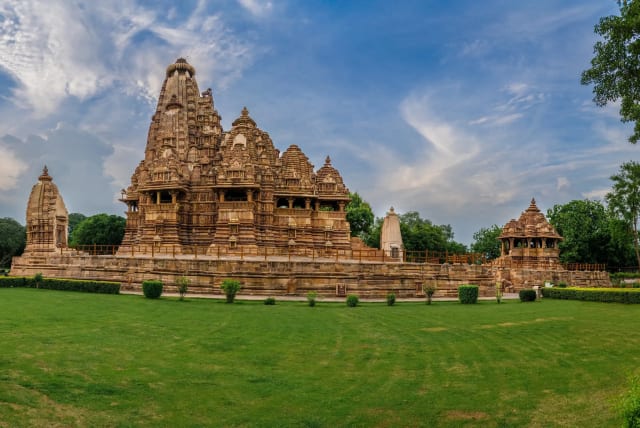Stone balls worshiped in India revealed to be dinosaur eggs

Locals revered these rocks as divine manifestations and now scientists revealed their true identity: Dinosaur eggs.
A recent revelation in a village in Madhya Pradesh, India, has captivated the attention of locals, nature experts, and travelers alike, according to local media reports. The “stone balls” that have been worshiped by generations of residents are not what they were believed to be.
These palm-sized objects, known as “Kakad Bahirav” to the locals, were thought to be sacred entities that provided protection or represented an ancient deity safeguarding fields and livestock. Offering coconuts to these rocks was a daily ritual for the villagers. However, a team of scientists decided to investigate these stones and made an unexpected finding – the revered objects are actually fossilized dinosaur eggs.
Sacred Stones Worshipped For Generations In India Turn Out To Be Dinosaur Eggs . P.S. not Raptors eggs . pic.twitter.com/d5EI1ZbKAX
— Total Randomness (@totalrondom) December 30, 2023
This astonishing revelation was made public last December when a group of scientists began exploring a local park estimated to be over 70 million years old. The experts from the Birbal Sahni Institute of Palaeobotany in Lucknow took a closer look at these stones and discovered that they were ancient dinosaur eggs. The tradition of worshiping these objects has been deeply embedded in the local culture for generations.
Revealing the truth behind rocks worshiped in India: Dinosaur eggs
According to a local dinosaur expert, efforts are now underway to showcase these incredible findings to the world. “These stones, often placed under fig trees, have been worshipped for generations,” he explained. “As efforts are underway to transform the area into a zoological park, preserving these traditions becomes integral to the park's cultural richness.”
https://t.co/oAqQwxEaZXSacred Stones Worshipped For Generations In India Turn Out To Be Dinosaur Eggs
— @Lamhfada@mastodon.ie (@Lamhfada) December 30, 2023
These colossal dinosaur eggs, measuring approximately 18 centimeters in diameter, have been remarkably preserved. Some are already on display, and measures are being taken to safeguard the remaining eggs.
Sacred Stones Worshipped For Generations In India Turn Out To Be Dinosaur Eggs https://t.co/0ZYaZa9Xoi #news #breaking
— Off The Press (@OffThePress1) December 30, 2023
This discovery not only shatters long-held beliefs about these sacred artifacts but also contributes to a deeper understanding of the paleontological history of the region.
Jerusalem Post Store
`; document.getElementById("linkPremium").innerHTML = cont; var divWithLink = document.getElementById("premium-link"); if (divWithLink !== null && divWithLink !== 'undefined') { divWithLink.style.border = "solid 1px #cb0f3e"; divWithLink.style.textAlign = "center"; divWithLink.style.marginBottom = "15px"; divWithLink.style.marginTop = "15px"; divWithLink.style.width = "100%"; divWithLink.style.backgroundColor = "#122952"; divWithLink.style.color = "#ffffff"; divWithLink.style.lineHeight = "1.5"; } } (function (v, i) { });
